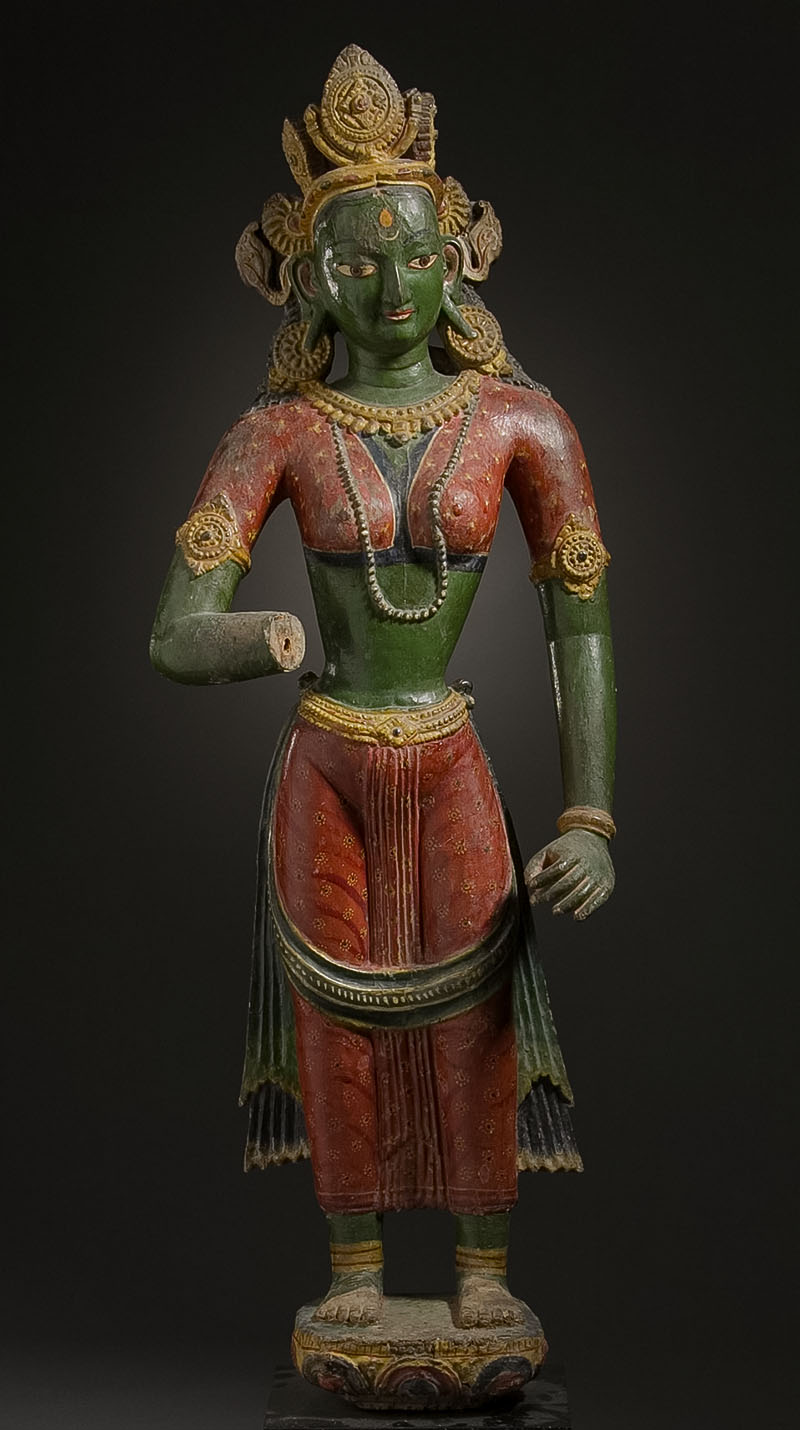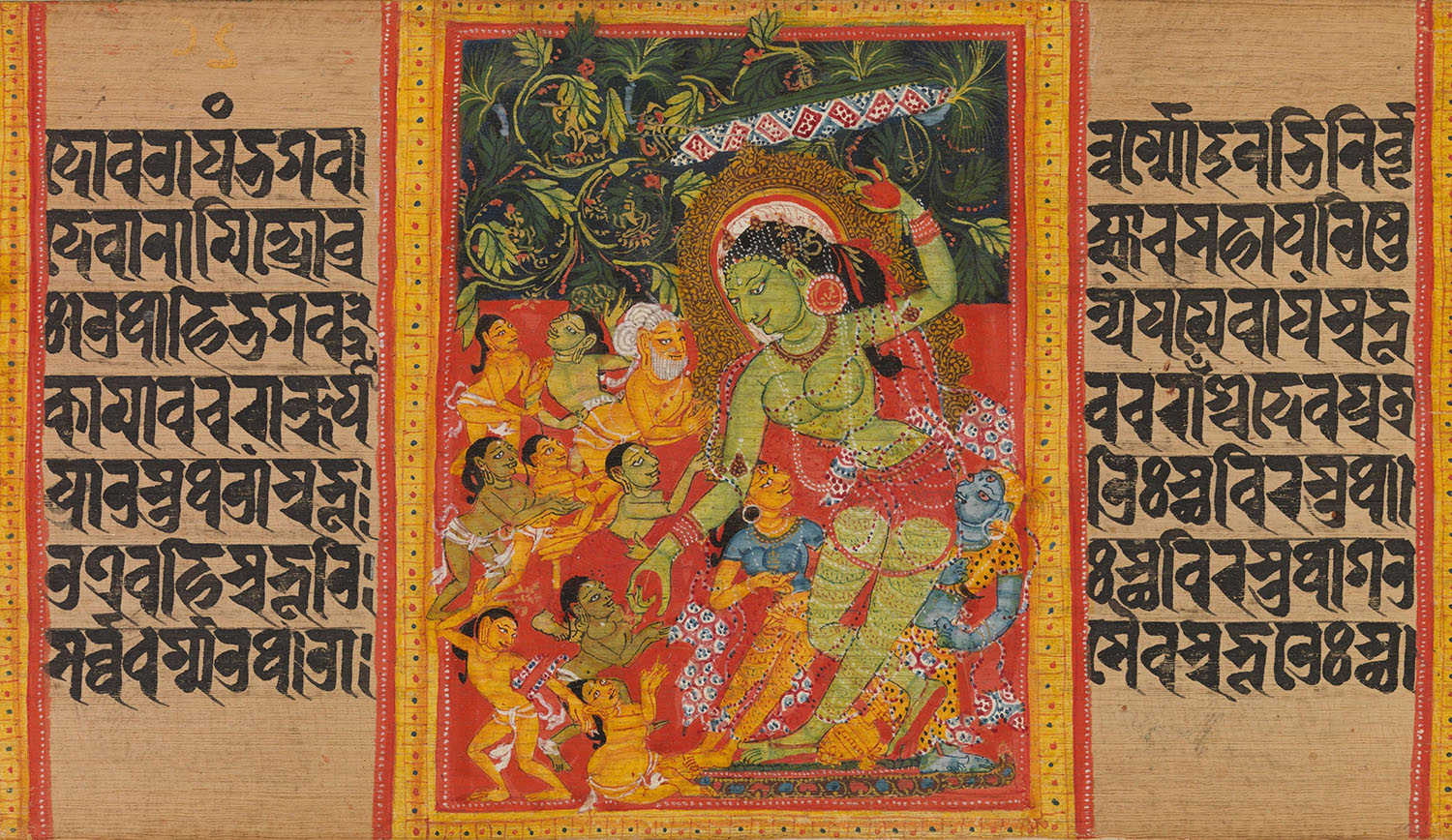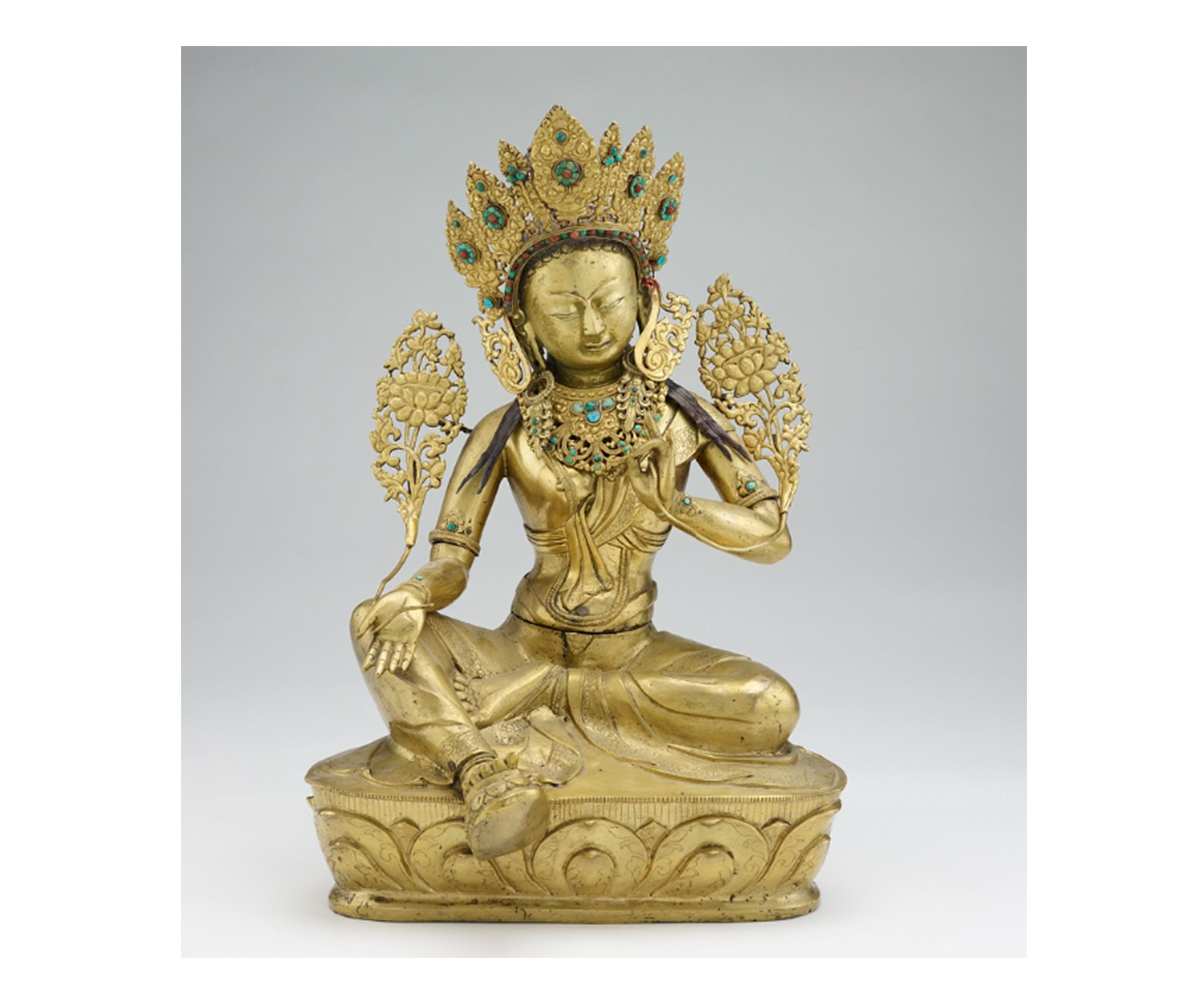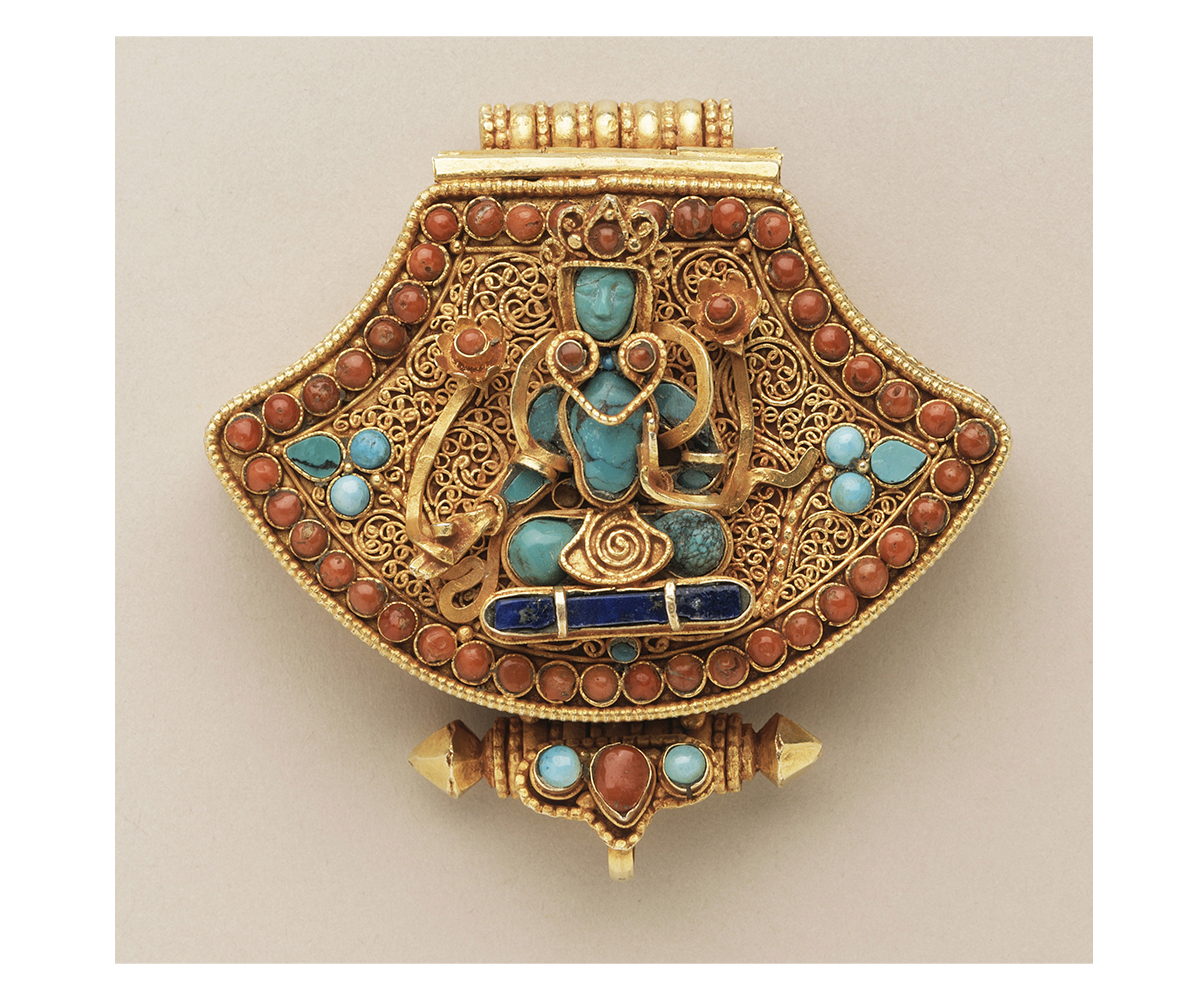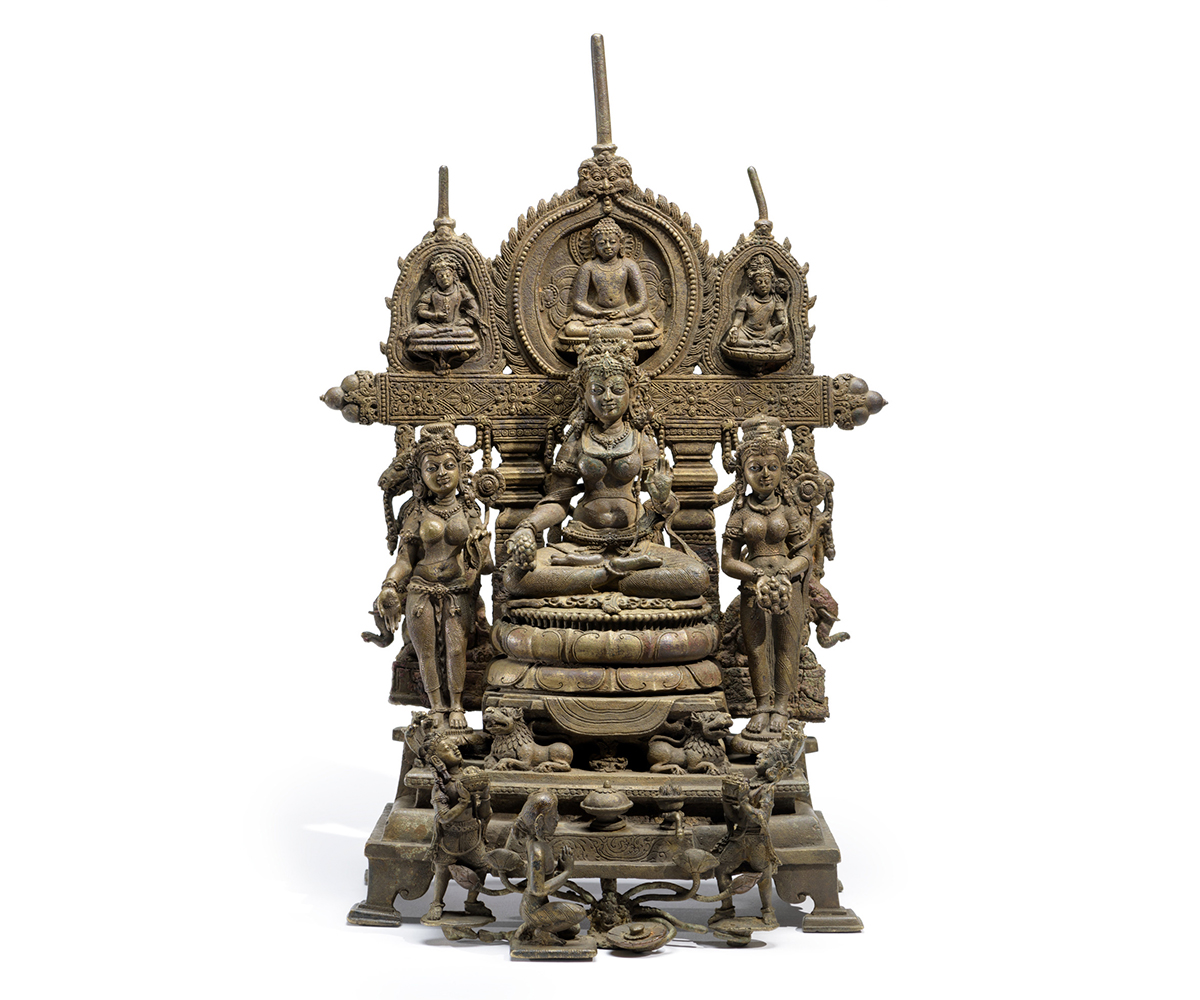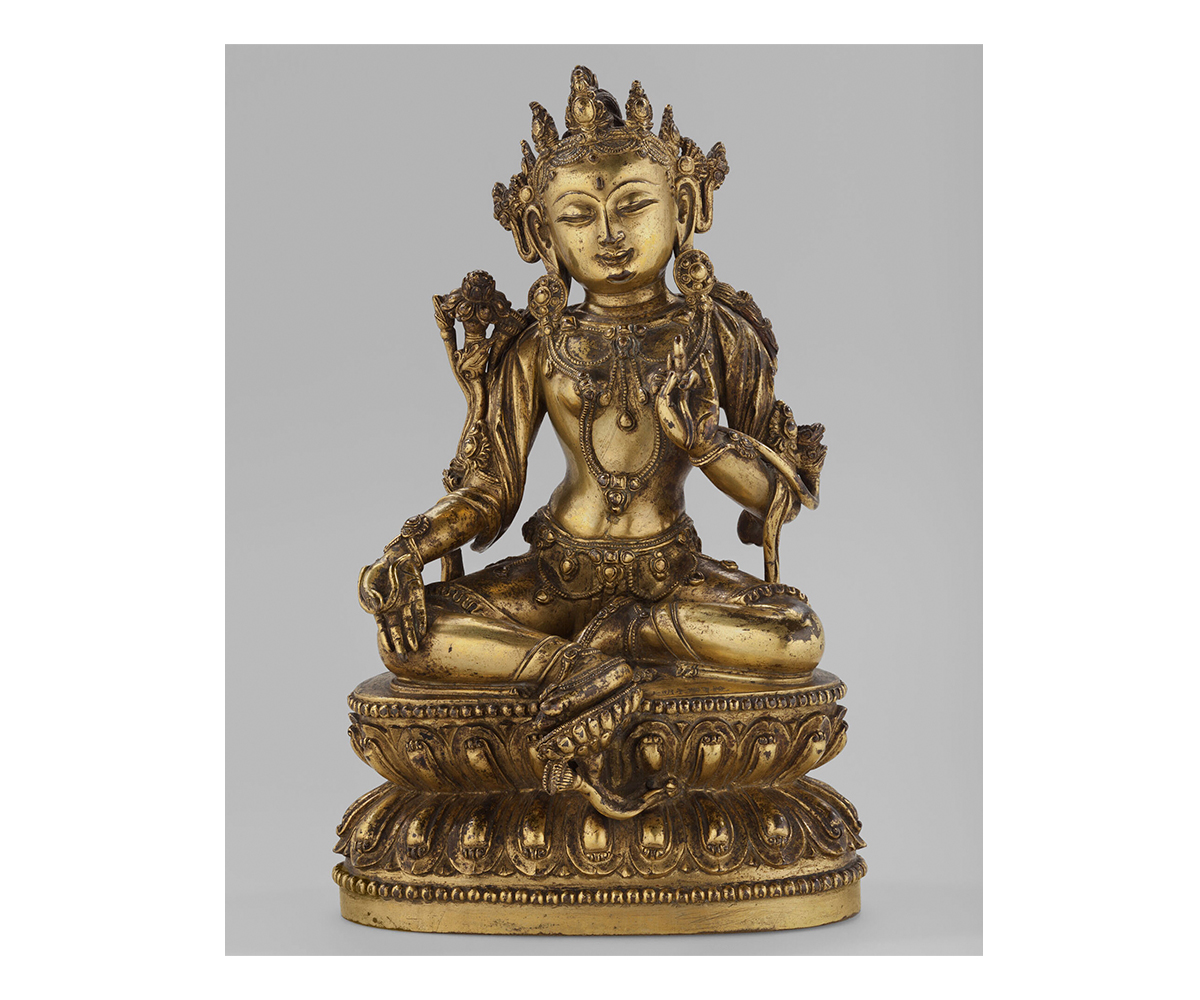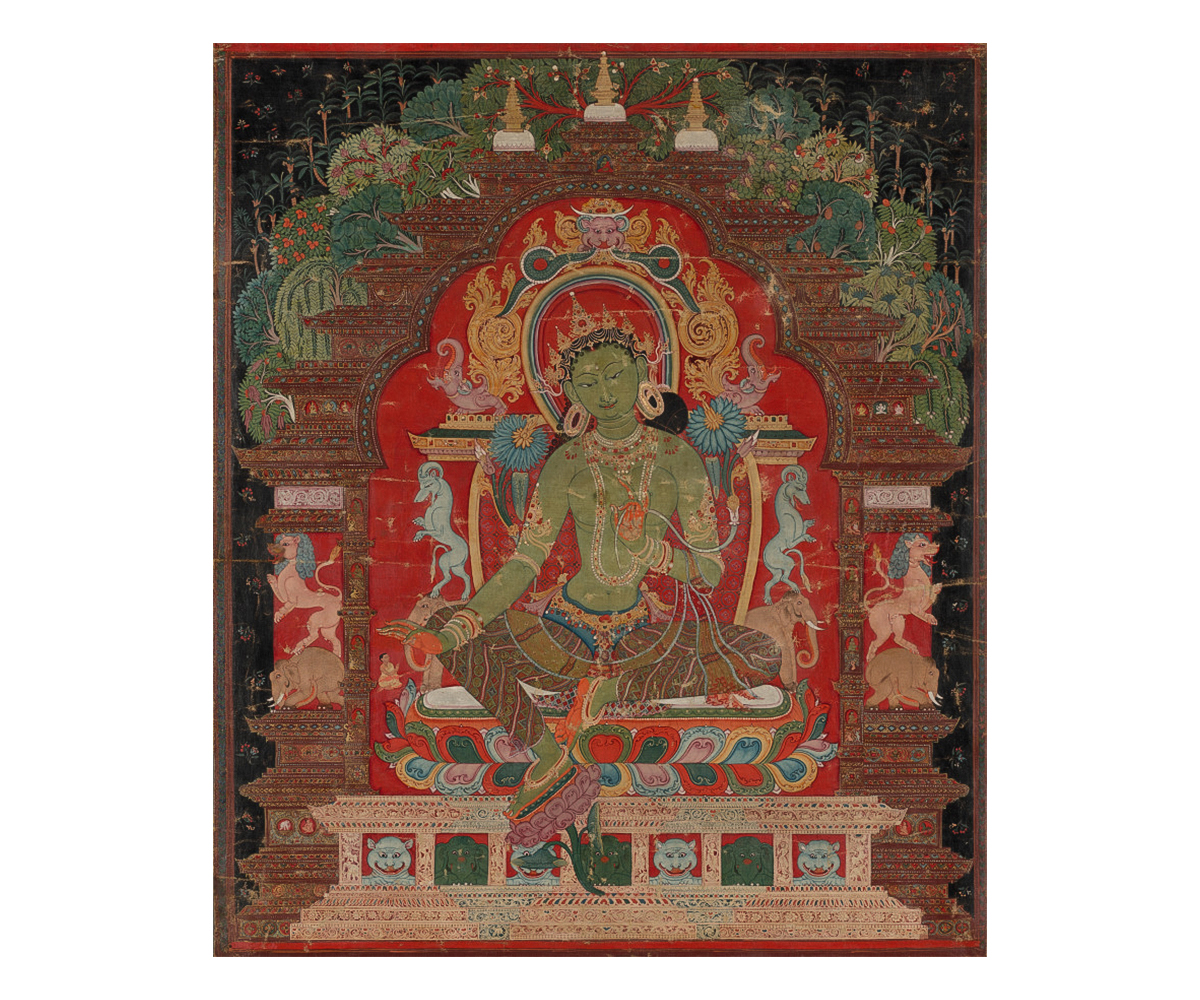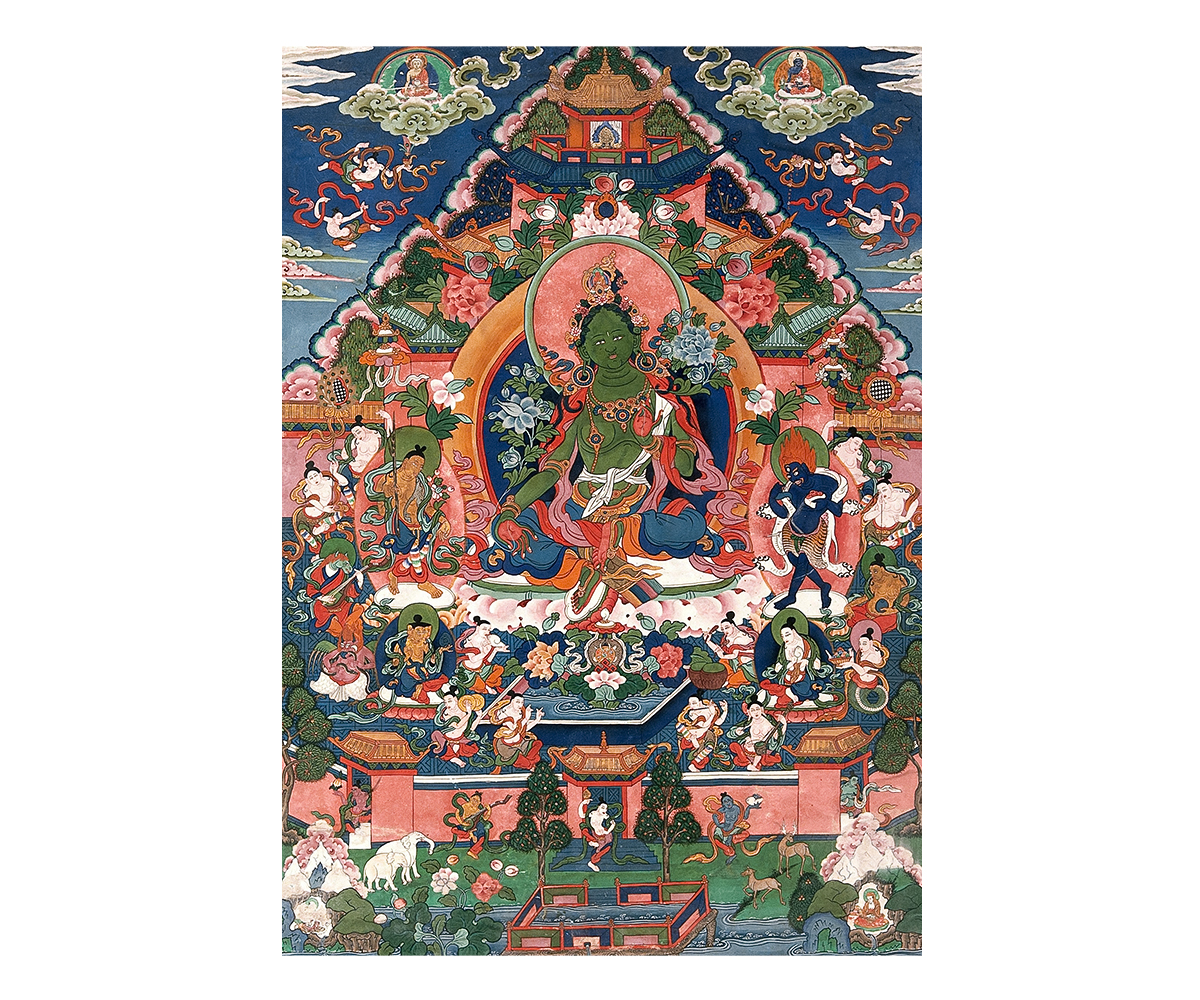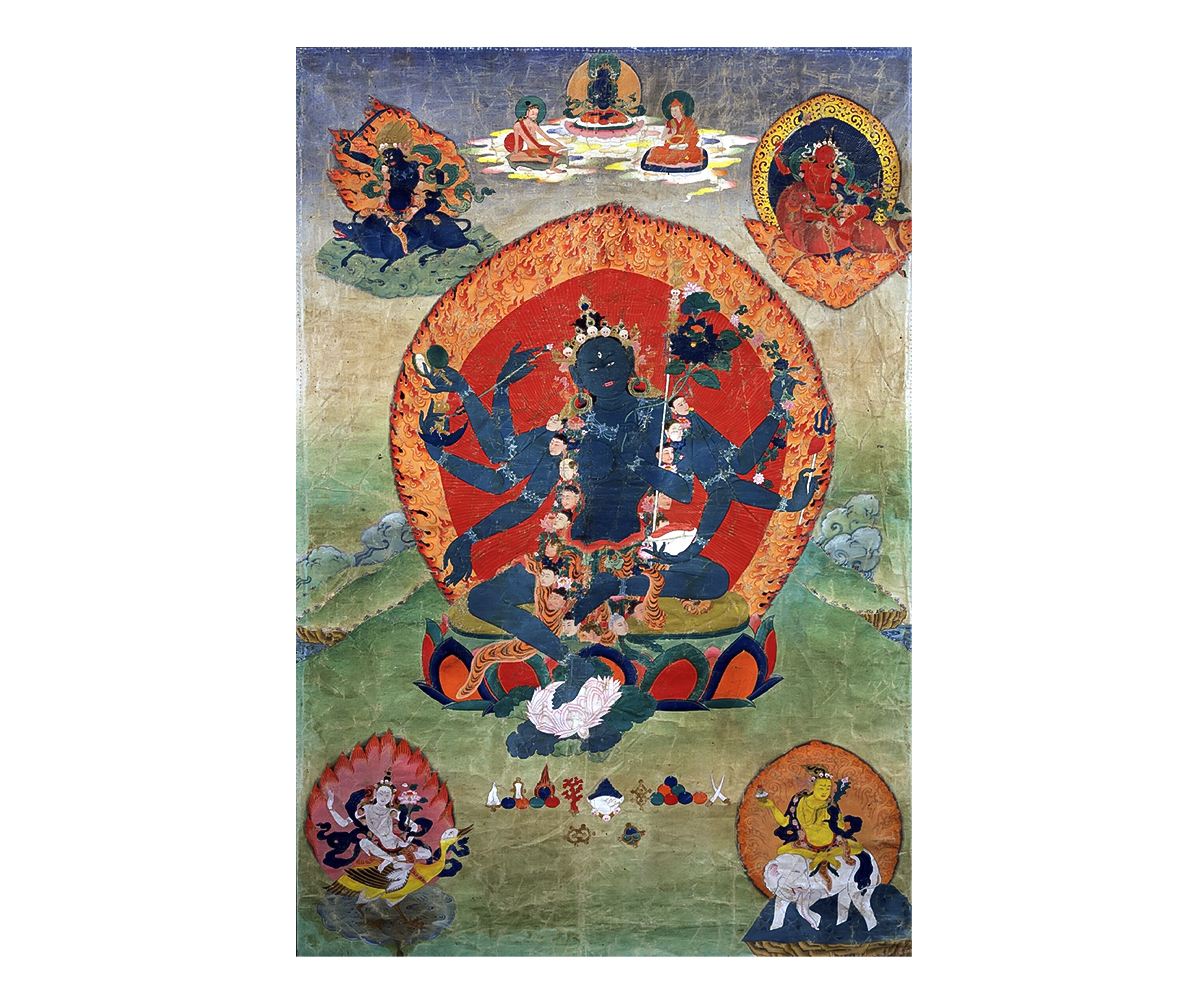ARTICLE
Green Tara
The emphasis on visualisation in the cult of Tara has given rise to specific iconographic representations of the deity. While early depictions of Tara accompanied Avalokiteshvara, as a central figure Green Tara is depicted enthroned on a lotus with her right leg extends downwards, supported by a smaller lotus, in the lalitasana posture. Her right hand extends the boon-bestowing varada mudra. And while earlier representations depicted her left hand resting on her knee, Green Tara’s iconography has developed to show her holding a blue lotus or the utpala flower clasped between her thumb and ring finger, with the three raised fingers symbolising the three jewels in Buddhism — Buddha, Dharma and Sangha — while a lunar nimbus radiates from behind her. Green Tara is also often depicted as a regal figure adorned with jewellery and fine garments.
An important manifestation of Green Tara is as Khadiravani Tara or Tara of the Acacia forest, known from literary sources dating to the late eighth or early ninth century CE, and artistic representations from the ninth century onwards. She is typically depicted standing with her attendants: the golden-hued Ashokanta Marichi who holds an Ashoka blossom, and Ekajata depicted in shades of blue, who holds a skull-cup. Flowers adorn her hair in the manner of a crown and in some Tibetan paintings, Khadiravani Tara is also depicted as the central figure in a royal celestial court in paradise or yuloku with natural motifs such as trees bearing fruit and flowers. Scholars have suggested that Khadiravani Tara associated with the colour green, attributes such as lotus flowers and the acacia tree which is used in medicine for healing, is intrinsically linked to nature and forests. She is also depicted amid lions, elephants, crocodiles, deer and makaras. Scholars have also traced this emanation of Green Tara to images of the deity Lakshmi who, in Tibet is depicted in green, seated on a lotus against a natural landscape and is associated with nourishment.
Other forms of Green Tara include Mahattari Tara seated with folded legs in deep meditation, Varada Tara, Vashyadhikara Tara who is seated with both legs extending to the ground in the bhadrasana posture, Mahasri Tara in a vitarka mudra or teaching gesture with a pair of lotuses, and Kapali Tara who is depicted under fruit trees.
In Tibetan Buddhism, the cult of Green Tara continues to hold a position of prominence alongside the bodhisattva Avalokiteshvara. In ritual practice, images of Green Tara painted primarily on thangkas, are used to aid visualisation rituals.
Bibliography
Beyer, Stephan. The Cult of Tārā: Magic and Ritual in Tibet. Berkeley; Los Angeles; London: University of California Press, 1978.
Bokar, Rinpoche, ed. Tara: The Feminine Divine. San Francisco, California: ClearPoint Press, 2007.
Buswell, Robert E., and Donald S. Lopez. The Princeton Dictionary of Buddhism. Princeton: Princeton University Press, 2014.
Landaw, Jonathan, and Andy Weber. Images of Enlightenment: Tibetan Art in Practice. Ithaca, New York: Snow Lion Publications, 2006.
Shaw, Miranda Eberle. Buddhist Goddesses of India. Second printing, and first paperback printing. New Jersey: Princeton University Press, 2015.




